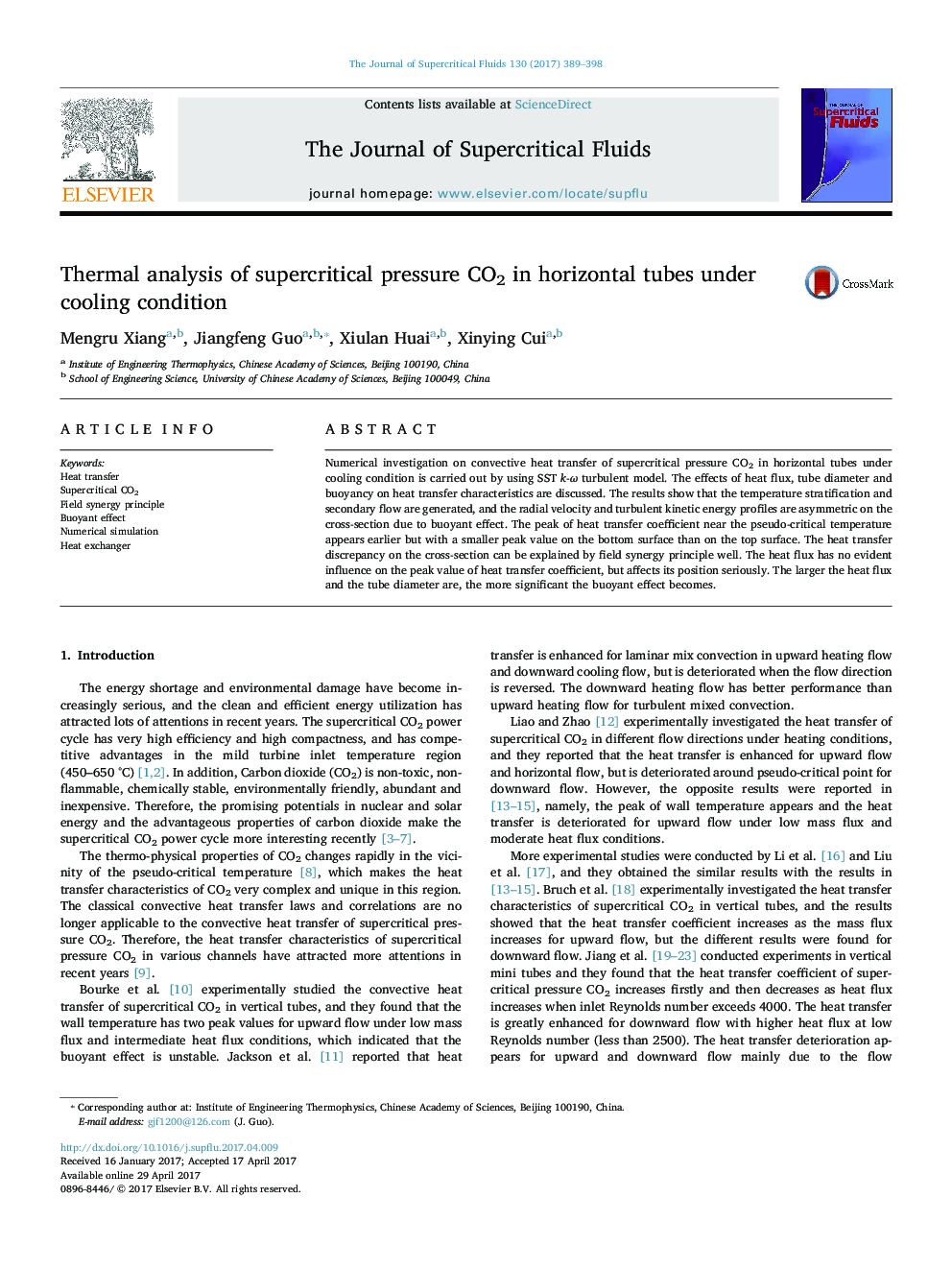| Article ID | Journal | Published Year | Pages | File Type |
|---|---|---|---|---|
| 6477757 | The Journal of Supercritical Fluids | 2017 | 10 Pages |
â¢Heat transfer has better performance on the top region than on the bottom region.â¢Temperature stratification and secondary flow are generated due to buoyant effect.â¢Buoyant effect increases with increasing heat flux and tube diameter.â¢Heat transfer discrepancy on cross-section can be explained by field synergy principle.
Numerical investigation on convective heat transfer of supercritical pressure CO2 in horizontal tubes under cooling condition is carried out by using SST k-Ï turbulent model. The effects of heat flux, tube diameter and buoyancy on heat transfer characteristics are discussed. The results show that the temperature stratification and secondary flow are generated, and the radial velocity and turbulent kinetic energy profiles are asymmetric on the cross-section due to buoyant effect. The peak of heat transfer coefficient near the pseudo-critical temperature appears earlier but with a smaller peak value on the bottom surface than on the top surface. The heat transfer discrepancy on the cross-section can be explained by field synergy principle well. The heat flux has no evident influence on the peak value of heat transfer coefficient, but affects its position seriously. The larger the heat flux and the tube diameter are, the more significant the buoyant effect becomes.
Graphical abstractDownload high-res image (368KB)Download full-size image
